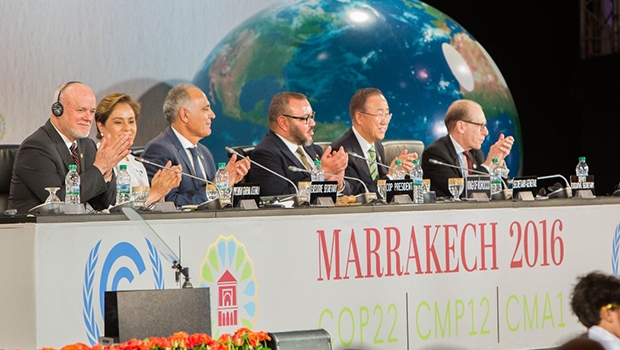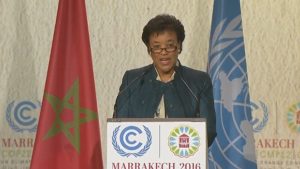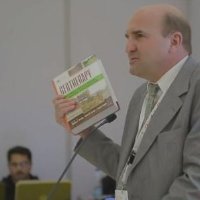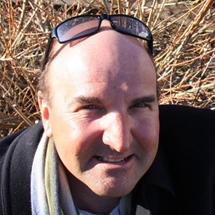Landmarks in Geotherapy
The Commonwealth at global climate talks.
Recent weeks might be seen in history as a turning point for the geotherapy movement. As Seth Itzkan of Soil4Climate explained at the Cambridge Climate Congress 2016, we now have two teams fighting global warming. They are not playing against one another, but rather attacking the problem from different angles: sources and sinks.
In blue, we have the Sources team: those trying to build a low carbon economy, promoting renewable energies, electrification of transportation, new life style and urbanism, and green industries or industrial ecology. The Sources team has made great progress in the last 50 years. As an example, solar photovoltaic went from 76 USD per kilowatt hour in the seventies to a record breaking 2.99 cents in a recent 350 MW photovoltaic contract in Dubai, to be delivered in 2030. The current price of photovoltaic electricity is 30 cents, down 90% in six years (not including installation costs). So bidders for the Dubai contract anticipate another 90% drop in prices! Too slowly, but surely, this is bringing humanity into a new energy reality, eventually dropping sources drastically.
The emerging Green team
The carbon farming and land restoration movements are on the other team, the Green team, with their hands in the dirt. They are the carbon sink team, the new kids on the block. They are trying to be carbon-negative, to restore soils and lands as they were before agriculture, when soils were almost virgin from human interventions, and the result of biomass from forests in co-evolution with fauna. To refer to the team, the United Nations Convention to Combat Desertification (UNCCD) has recently come up with a new, slightly strange, wording: “Land Degradation Neutrality” (LDN). A bit odd indeed for an expression referring in reality to what the carbon sink team refers to as restoration or regeneration:
The focus and aim of LDN is to maintain and improve the productivity of land resources by sustainably managing and restoring soil, water and biodiversity assets, while at the same time contributing to poverty reduction, food and water security, climate change adaptation and mitigation.
LDN in fact refers to a simple reality: nature has produced healthy, fertile, and productive soils in the past. Let’s mimic nature, restore agriculture and pasture soils, to how they were before tilling and industrial processes of big agriculture, when they contained 50 to 70% more carbon. Yet, “carbon increase,” “regenerative,” “soil enhancer,” and other “healthy soils,” are what the UNCCD refers to. Land degradation neutrality, hmm… what the UN will not imagine to not sound “activist-like.”
Dr. Thomas Goreau reported that on October 28-29 in London, the Commonwealth Secretariat held an important meeting on Regenerative Development for Reversing Climate Change. 52 countries with 2.5 billion people will commit themselves to the regeneration of ecosystems and soils to reverse global climate change at a major meeting in June. Tom said,
This meeting of technical experts prepared a strategy for moving forward. I chaired the group on Sustainable Watersheds and Ocean Management, and gave Lady Patricia Scotland, the Secretary General of the Commonwealth Secretariat, a copy of our book on Geotherapy: Innovative Methods for Soil Fertility Restoration, Carbon Sequestration, and Reversing Global Warming.
This is a major move, which builds on the French voluntary soil carbon proposal, “4per1000,” and which will add to it on a very significant scale, because the Commonwealth, the Francophone Community, and the EU (which has largely backed the French proposal) include the majority of the world’s population. I cannot agree more with Tom when he writes:
We are finally seeing significant political momentum building up for effective biologically-based solutions to climate change based on restoration of soil fertility and ecosystem productivity, nearly 30 years after it was proposed.
(See Goreau, 1987, The other half of the global carbon dioxide problem, Nature, 328: 581-582; Goreau, 1990, Balancing atmospheric carbon dioxide, Ambio, 19: 230-236; Myers & Goreau, 1991, Tropical forests and the greenhouse effect: A management response, Climatic Change, 19: 215-225).
Indeed, in their 1990 Ambio article, Myers & Goreau wrote,
CO2 stabilization is primarily a biological problem, not a technological or geophysical one, because the bulk of carbon flows through biotic processes. Increased photosynthesis and carbon storage in vegetation, soils, and sediments is therefore needed along with emissions reductions to stabilize CO2.
On the road to Marrakech — COP22
In recent years groups such as Soil4Climate, Soil-Age, Regeneration International, the Carbon Underground, the Savory Institute, the International Biochar Initiative, the Soil Carbon Coalition, and others, have been presenting a more optimistic approach to the climate crisis. Some international initiatives, such as the 4 per 1000 or the Commonwealth Regenerative Development for Reversing Climate Change, show a real rise in consciousness regarding land management, the interplay among the land’s physical, chemical, and biological properties, and soil health. Awareness of the opportunity for turning atmospheric carbon into water-holding, fertility-enhancing soil organic matter and humus, is rising.
Adding to a series of articles in the mainstream press and scientific journals, more discreetly, the International Biochar Initiative convened in Nanjing, China on October 17-18th, for their annual board meeting to review achievements and discuss the future direction of the organization. Updating IBI’s Vision, it revealed a new target: “Generating one billion tons of biochar per year within the next 50 years.” One billion tons! October 2016 will definitely be remembered as a landmark in the progress of geotherapy.
Finally, in Marrakech at COP 22, Africa launched the initiative for the Adaptation of African Agriculture to Climate Change (AAA). It will promote and support good practices in areas of soil management, agricultural-water control, climate-risk management, capacity building, and funding solutions. These are concrete responses intended to tackle issues related to climate change and food insecurity, and to address the challenges of sustainable agriculture. Let us hope this is also a landmark to celebrate, that African governments will not get fooled by big agriculture selling snake oils for wealth and solutions – wealth and solutions that are in reality right under our feet.
New knowledge about soils, the role of carbon in them, and the rapid diffusion of this information, are also landmarks in the history of humanity and its planet. Because of its infinite applications, some compare this evolution to the introduction of electricity. Electricity? Sounds like a landmark!
Benoit Lambert, PhD is a member of the Soil4Climate advisory board; Biochar developer and geotherapist; owner of Biochar Génération; formally, Editor and Director of Publications, Worldwatch Institute, Geneva, Switzerland.
Reposted with permission from Geotherapy Chronicle – For food security & global warming reversal, Chronique d’une géothérapie — pour la sécurité alimentaire & l’inversion du réchauffement planétaire
https://cologie.wordpress.com/2016/11/11/landmarks-of-a-geotherapy-evenements-marquants-dune-geotherapie-version-en-francais-plus-bas-in-french-below/. Visit their website at https://cologie.wordpress.com/.
Support us on Patreon
Thank you for joining us today! Please become a member of RTE and support us on Patreon. Unlike many larger organizations, we work with a team of determined and passionate volunteers to get our message out. We aim to continue to increase the awareness of remineralization to initiate projects across the globe that remineralize soils, grow nutrient dense food, regenerate our forests’ and stabilize the climate – with your help! If you can, please support us on a monthly basis from just $2, rest assured that you are making a big impact every single month in support of our mission. Thank you!











Got something to say?